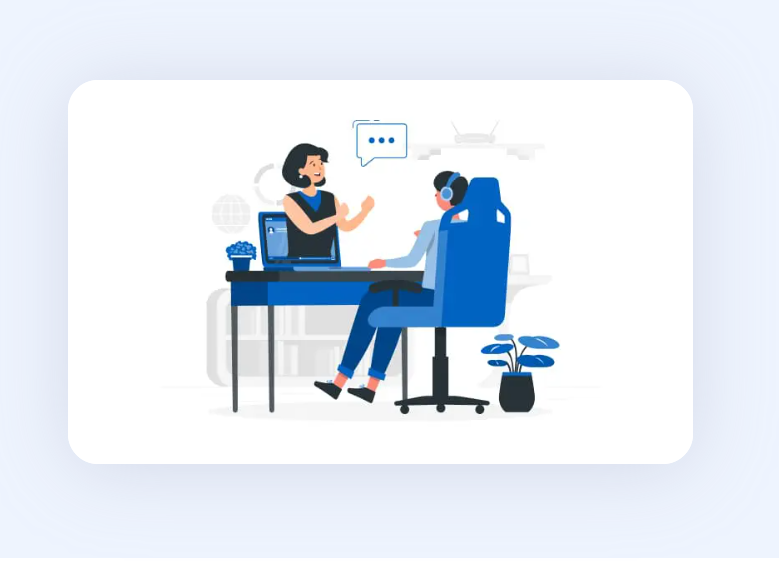In today's fast-paced digital world, traditional methods of learning are rapidly being replaced by more efficient and accessible alternatives. One such alternative that has gained immense popularity in recent years is e-learning. With the rise of smartphones and the internet, e-learning apps have become invaluable tools for students, professionals, and lifelong learners alike. In this article, we will explore the world of e-learning app development, its importance, key features, technologies involved, development process, challenges, and tips for success.
The Importance of E-Learning in Today's World
E-learning has revolutionized the way people access education. It offers flexibility, convenience, and accessibility, breaking down geographical barriers and allowing learners to access a wealth of knowledge anytime, anywhere. Especially in the wake of the COVID-19 pandemic, where traditional classrooms became impractical, e-learning emerged as a lifeline for students and educators, ensuring continuity in education.
Key Features of Successful E-Learning Apps
Successful e-learning apps share common features that enhance the learning experience for users. These include:
User-Friendly Interface
An intuitive and easy-to-navigate interface is essential for engaging users and facilitating seamless learning experiences.
Interactive Learning Tools
Interactive elements such as quizzes, videos, simulations, and discussion forums encourage active participation and enhance retention of information.
Personalized Learning Experience
Tailoring content to individual learner's preferences, interests, and learning styles improves engagement and ensures relevance.
Technologies Used in E-Learning App Development
E-learning apps leverage various technologies to deliver content effectively across different platforms. These include:
Mobile Platforms
Mobile-first development approaches, utilizing technologies like React Native or Flutter, ensure compatibility with a wide range of devices and operating systems.
Web Technologies
HTML5, CSS, and JavaScript are commonly used for building responsive web-based e-learning platforms accessible via browsers on desktops and mobile devices.
Cloud Computing
Cloud-based infrastructure enables scalability, reliability, and accessibility, allowing seamless access to learning resources from anywhere with an internet connection.
Steps Involved in E-Learning App Development
The development process of an e-learning app typically involves the following steps:
Research and Planning
Understanding target audience needs, market trends, and competitors is crucial for defining the app's features and functionalities.
Design and Prototyping
Creating wireframes and prototypes helps visualize the app's layout, user flow, and interactions before proceeding to development.
Development and Testing
Developing the app according to design specifications and conducting rigorous testing to identify and fix any bugs or issues.
Deployment and Maintenance
Deploying the app to app stores or web servers and regularly updating it with new features, content, and security patches to ensure optimal performance.
Challenges Faced in E-Learning App Development
Despite its numerous benefits, e-learning app development comes with its own set of challenges, including:
Technical Challenges
Ensuring cross-platform compatibility, optimizing performance, and integrating complex features can pose technical hurdles for developers.
User Engagement Challenges
Keeping users motivated and engaged over time requires innovative strategies such as gamification, social learning, and personalized recommendations.
Security Concerns
Protecting user data, preventing unauthorized access, and securing transactions are paramount to maintaining trust and credibility in e-learning platforms.
Tips for Effective E-Learning App Development
To create a successful e-learning app, developers should consider the following tips:
Prioritize User Experience
Putting the user's needs first and foremost in the design and development process leads to higher satisfaction and retention rates.
Incorporate Gamification Elements
Adding game-like elements such as badges, leaderboards, and rewards incentivizes learning and makes the experience more enjoyable.
Regular Updates and Maintenance
Continuously improving the app based on user feedback, technological advancements, and industry trends ensures its relevance and longevity.
Case Studies of Successful E-Learning Apps
Several e-learning apps have achieved widespread acclaim and success, including:
- Khan Academy: Offering free educational resources across various subjects and grade levels, Khan Academy has empowered millions of learners worldwide.
- Duolingo: With its innovative approach to language learning through gamification, Duolingo has become one of the most popular language learning apps globally.
- Coursera: Partnering with leading universities and institutions, Coursera provides online courses and degrees spanning a wide range of disciplines, catering to learners of all backgrounds.
Conclusion
E-learning app development represents a transformative force in education, offering unparalleled accessibility, flexibility, and interactivity. By embracing emerging technologies, prioritizing user experience, and addressing challenges effectively, developers can create impactful e-learning solutions that empower learners and educators alike.
FAQs
- What are the benefits of e-learning apps over traditional classroom learning?
- How can e-learning apps personalize the learning experience for individual users?
- What security measures should e-learning app developers implement to protect user data?
- What role does artificial intelligence play in enhancing e-learning app functionalities?
- How can e-learning apps promote collaborative learning among users?





Comments